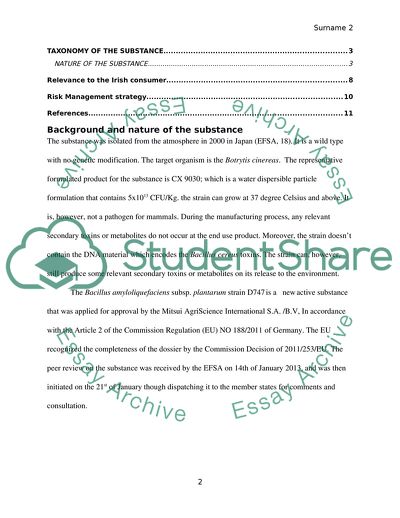Cite this document
(The Bacillus Amyloliquefaciens Subsp Plantarum Strain d747 Report, n.d.)
The Bacillus Amyloliquefaciens Subsp Plantarum Strain d747 Report. https://studentshare.org/chemistry/1845596-analysis-of-a-scientific-report-on-a-chemical-hazard
The Bacillus Amyloliquefaciens Subsp Plantarum Strain d747 Report. https://studentshare.org/chemistry/1845596-analysis-of-a-scientific-report-on-a-chemical-hazard
(The Bacillus Amyloliquefaciens Subsp Plantarum Strain d747 Report)
The Bacillus Amyloliquefaciens Subsp Plantarum Strain d747 Report. https://studentshare.org/chemistry/1845596-analysis-of-a-scientific-report-on-a-chemical-hazard.
The Bacillus Amyloliquefaciens Subsp Plantarum Strain d747 Report. https://studentshare.org/chemistry/1845596-analysis-of-a-scientific-report-on-a-chemical-hazard.
“The Bacillus Amyloliquefaciens Subsp Plantarum Strain d747 Report”. https://studentshare.org/chemistry/1845596-analysis-of-a-scientific-report-on-a-chemical-hazard.


